ULTRASONOGRAPHY LECTURE II_2
ULTRASONOGRAPHY LECTURE II
OBJECTIVES:
Explain the concept of key wave properties and its importance in sonography
Define ultrasound and describe its behavior
To know and understand the physics of ultrasound
SOUND
ACOUSTICS
A branch of physics that deals with sound and sound waves
TWO WAYS TO DEFINE SOUND:
Experiential:
What we hear through the human auditory system.
Physical:
Propagation of pressure variations through a medium from a sound source to a listener.
SOUND
A form of energy which causes a mechanical disturbance in the form of vibration of molecules within a medium
Sound is a mechanical wave that travels in a medium in a LONGITUDINAL WAVE and STRAIGHT-LINE FASHION
In order to be transmitted, sound requires a medium containing molecules, and therefore cannot travel through a vacuum.
The production of sound requires a vibrating object.
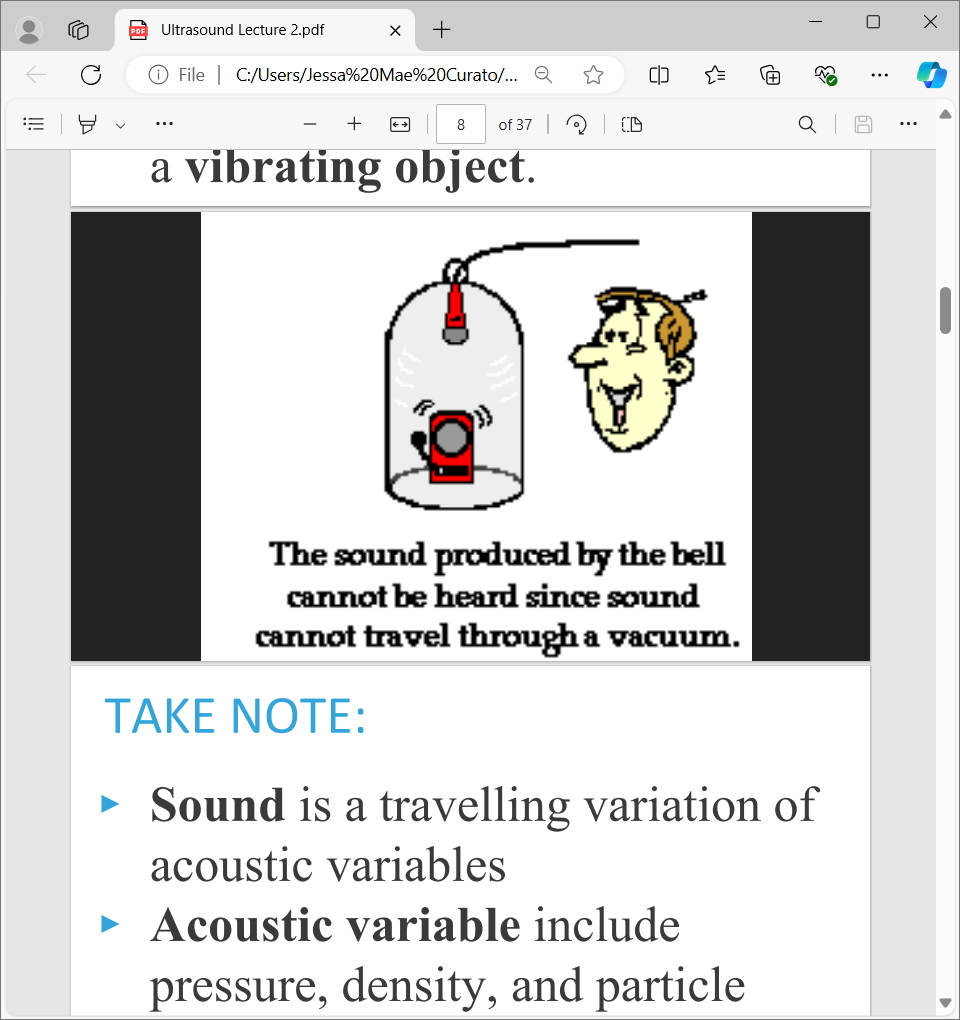
TAKE NOTE:
Sound is a travelling variation of acoustic variables
Acoustic variable include pressure, density, and particle motion
ULTRASOUND WAVE
Travels in a sinusoidal form
TYPES OF ULTRASOUND WAVE
LONGITUDINAL OR COMPRESSED WAVE
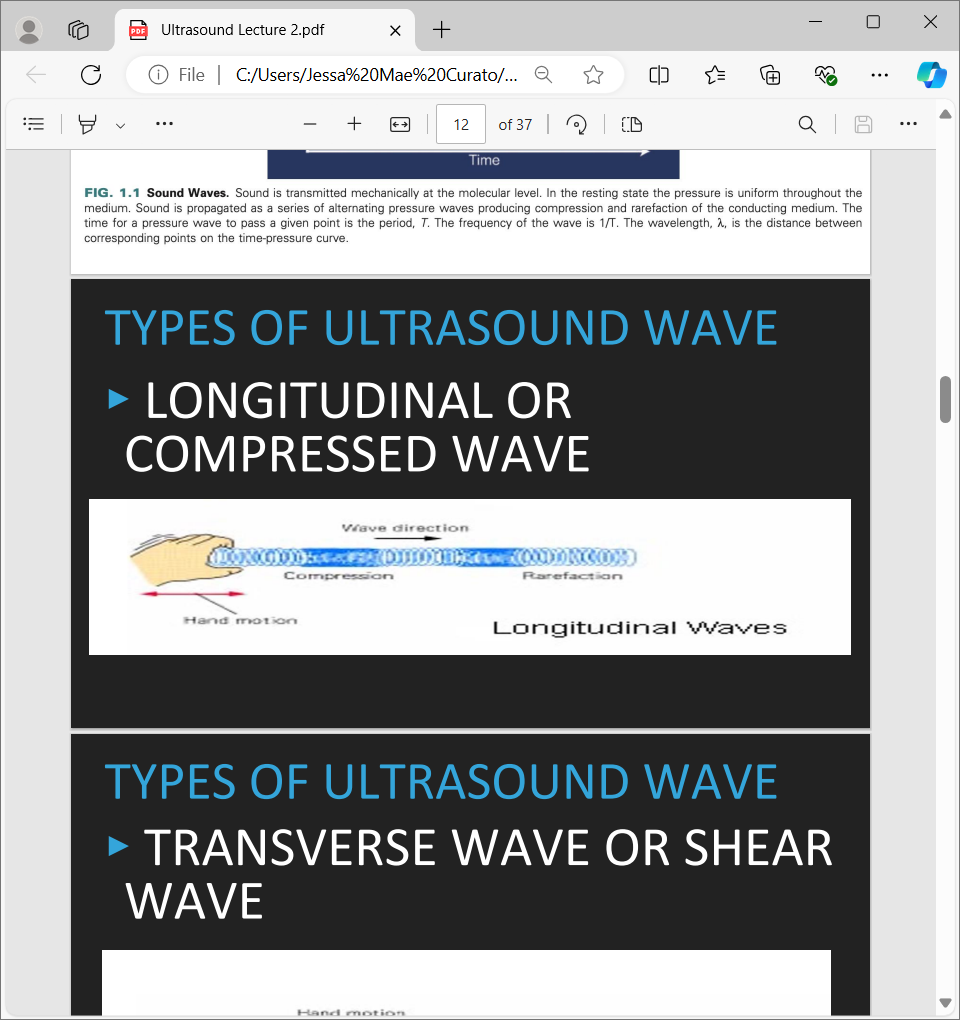
TRANSVERSE WAVE OR SHEAR WAVE
WHEN A SOUND TRAVELS THROUGH A MEDIUM
The molecules of that medium are alternately compressed and rarefied.
Compression
Regions of high pressure
Rarefaction
Regions of low pressure
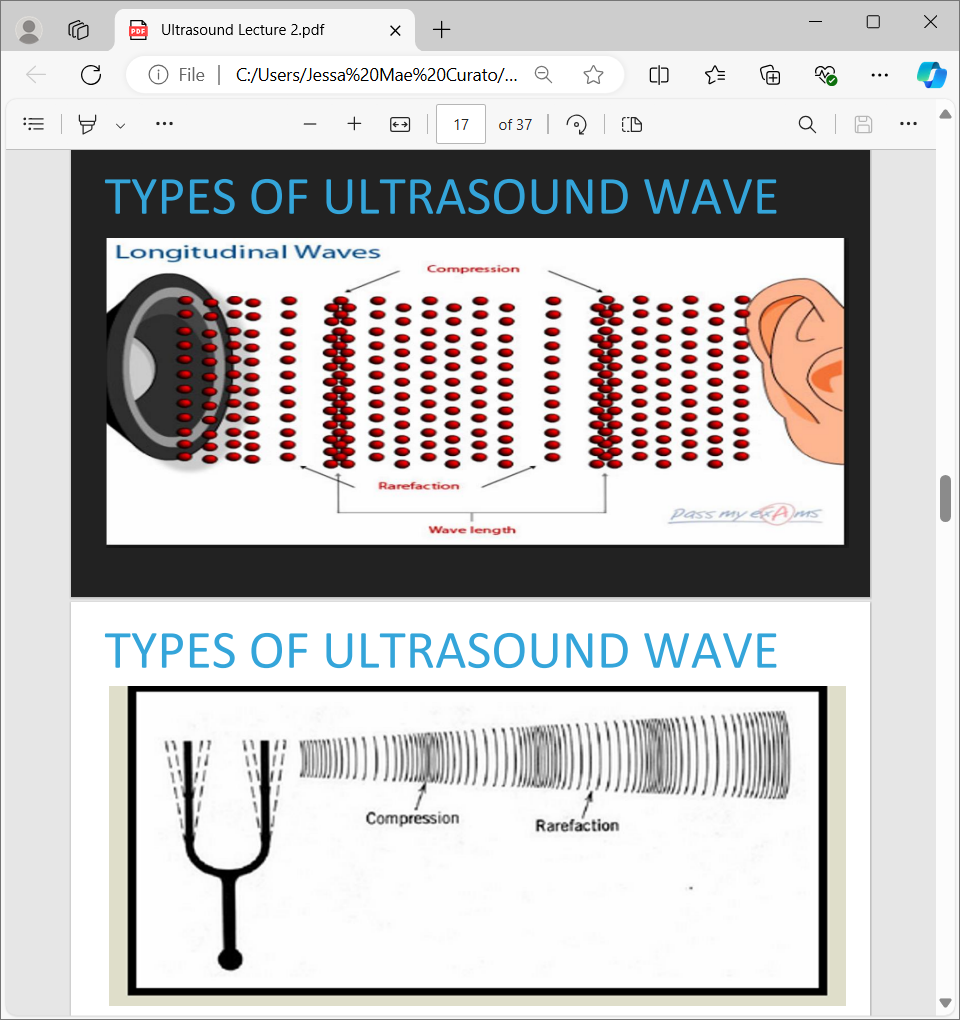
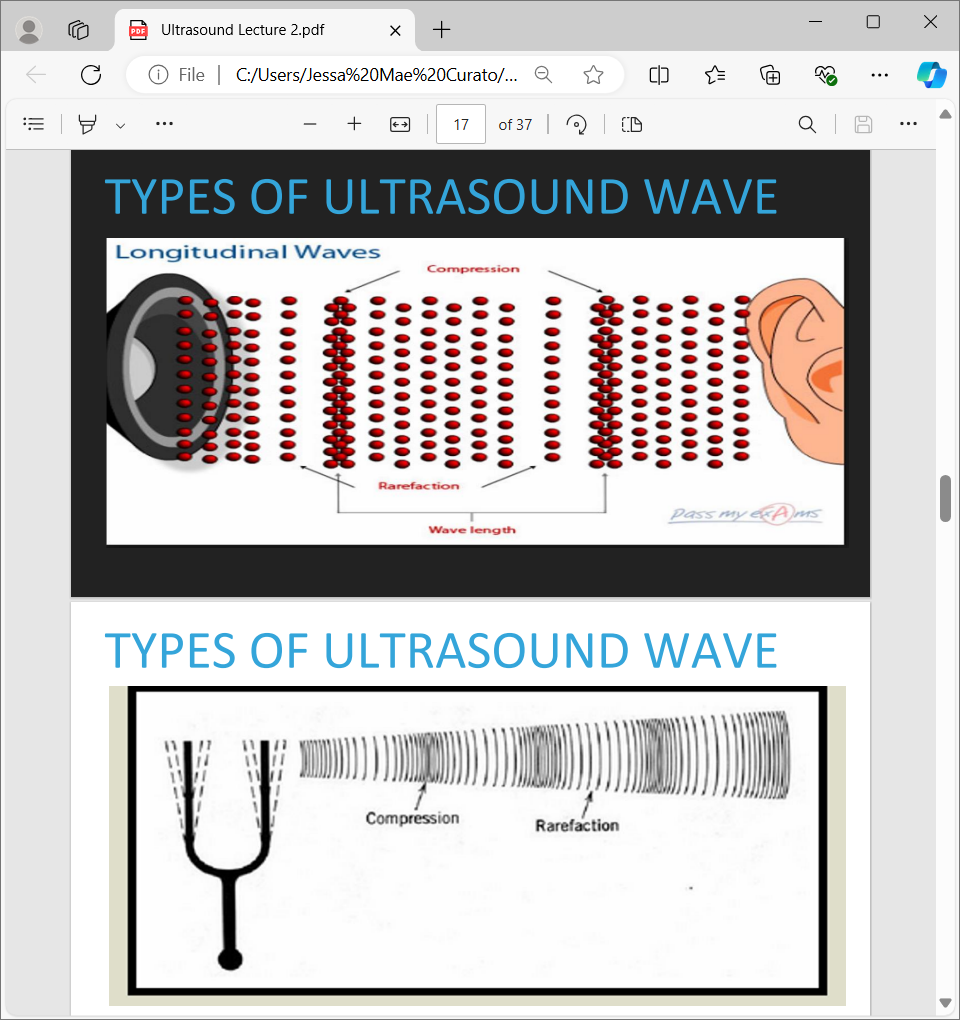
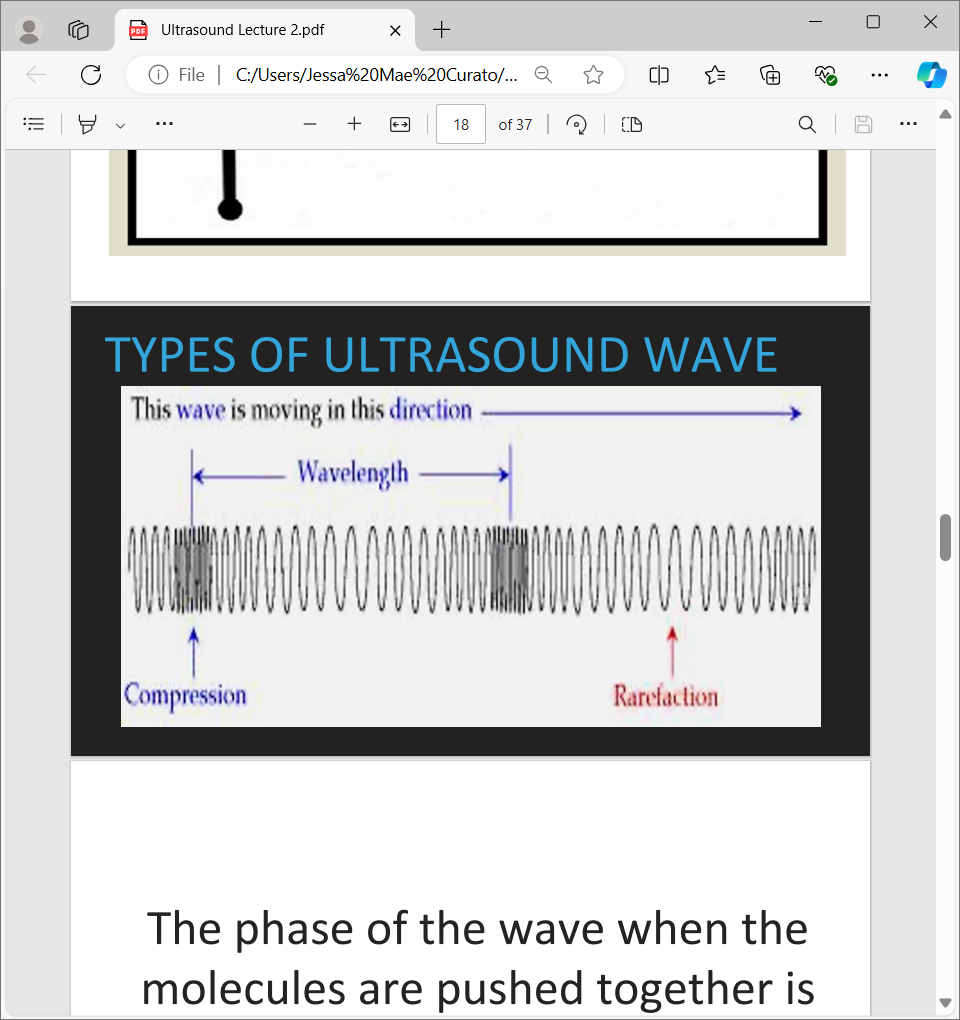
“The phase of the wave when the molecules are pushed together is called compression, and when apart, rarefaction”
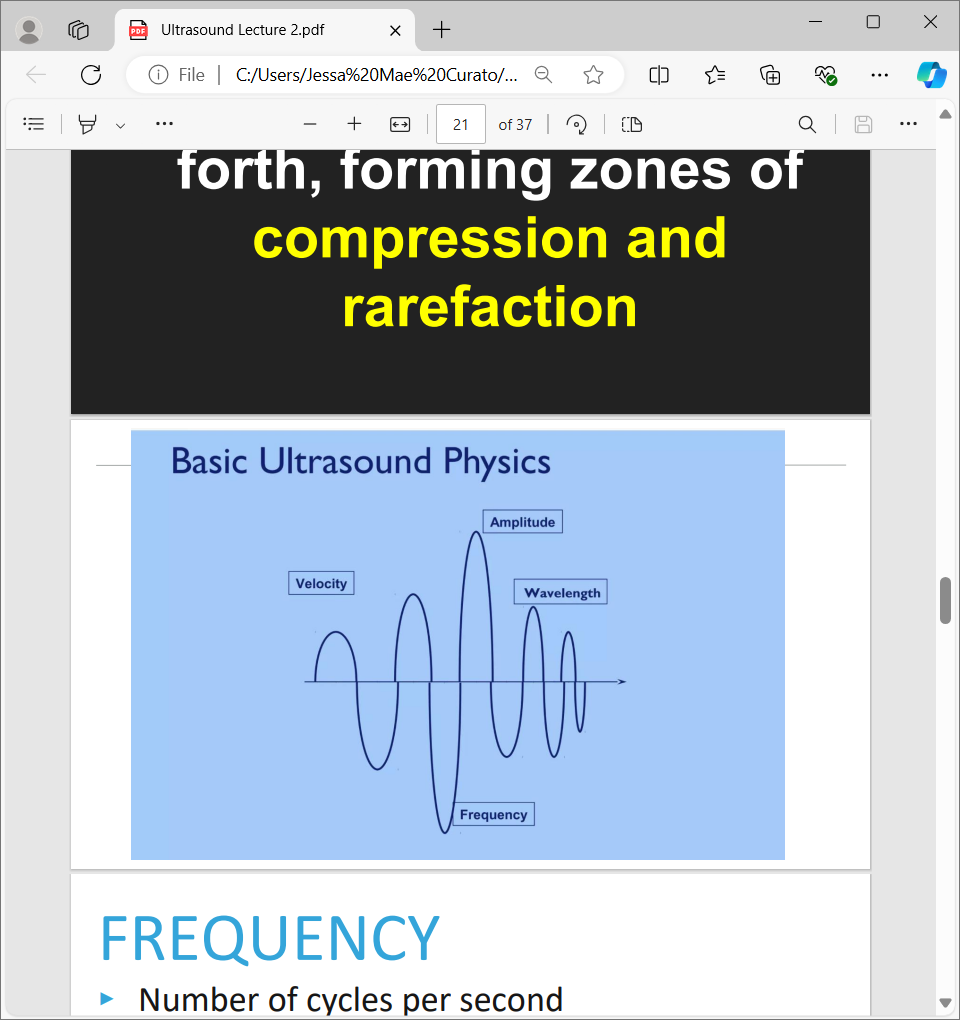
FREQUENCY
Number of cycles per second
Units: Hertz (Hz)
1 Hz = 1 cycle/second
Ultrasound imaging frequency range: 2-20 MHz
Determines pitch and is crucial for image resolution and penetration.
The lower the frequency, the higher the penetration, and lower of resolution
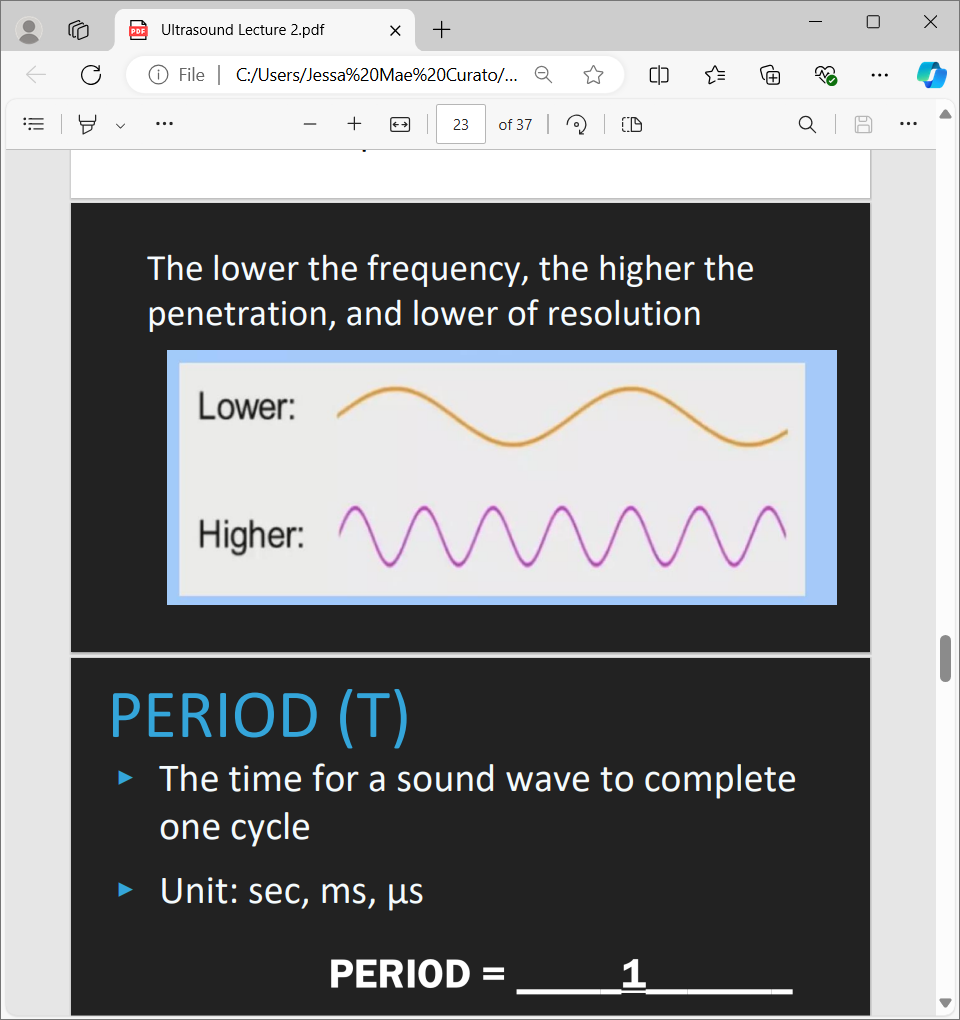
PERIOD (T)
The time for a sound wave to complete one cycle
Unit: sec, ms, µs
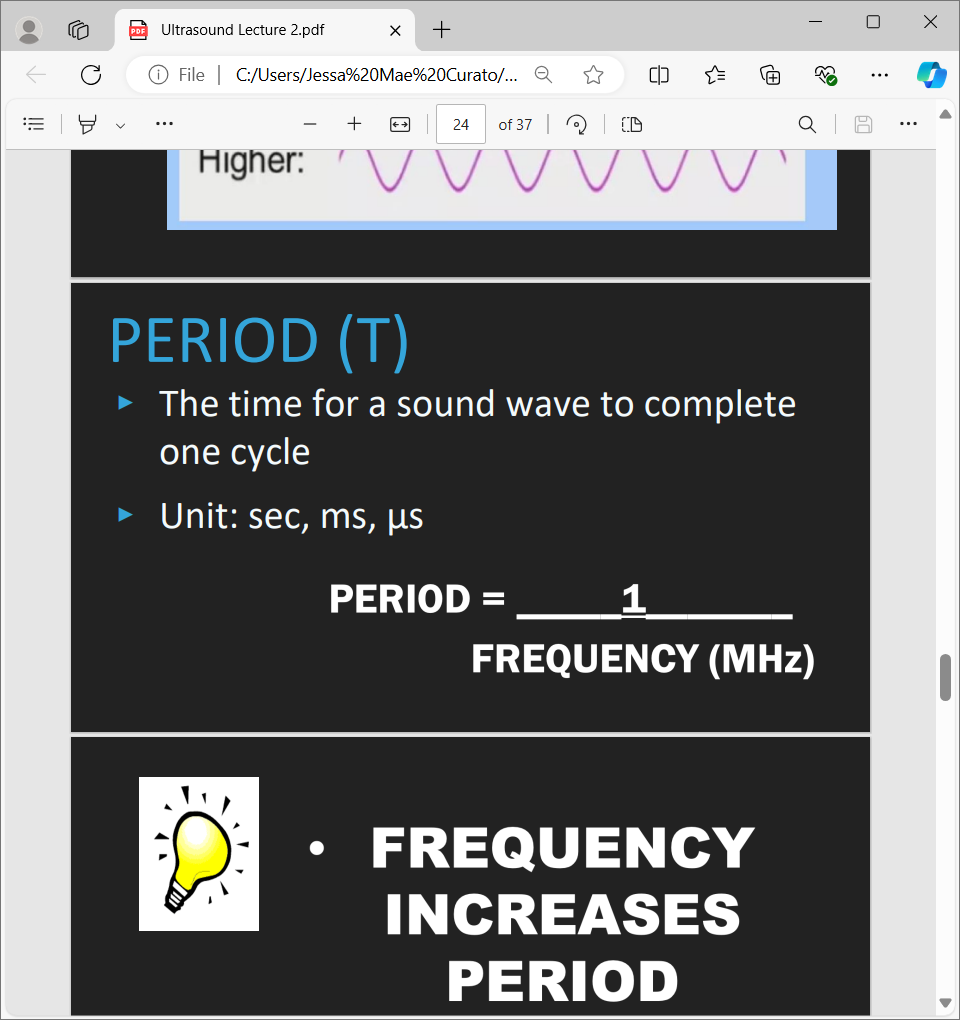
“FREQUENCY INCREASES PERIOD DECREASES”
WAVELENGTH / CYCLE LENGTH
Distance over which one cycle occurs
Length of cycle from front to back
PROPAGATION VELOCITY
Speed at which a sound wave travels through a medium (cm/sec)
Determined by density and stiffness of medium
Slowest in air/gas
Fastest in solids
Velocity = wavelength x frequency
Largely determined by the resistance of the medium to compression, which in turn is influenced by the density of the medium and its stiffness or elasticity.
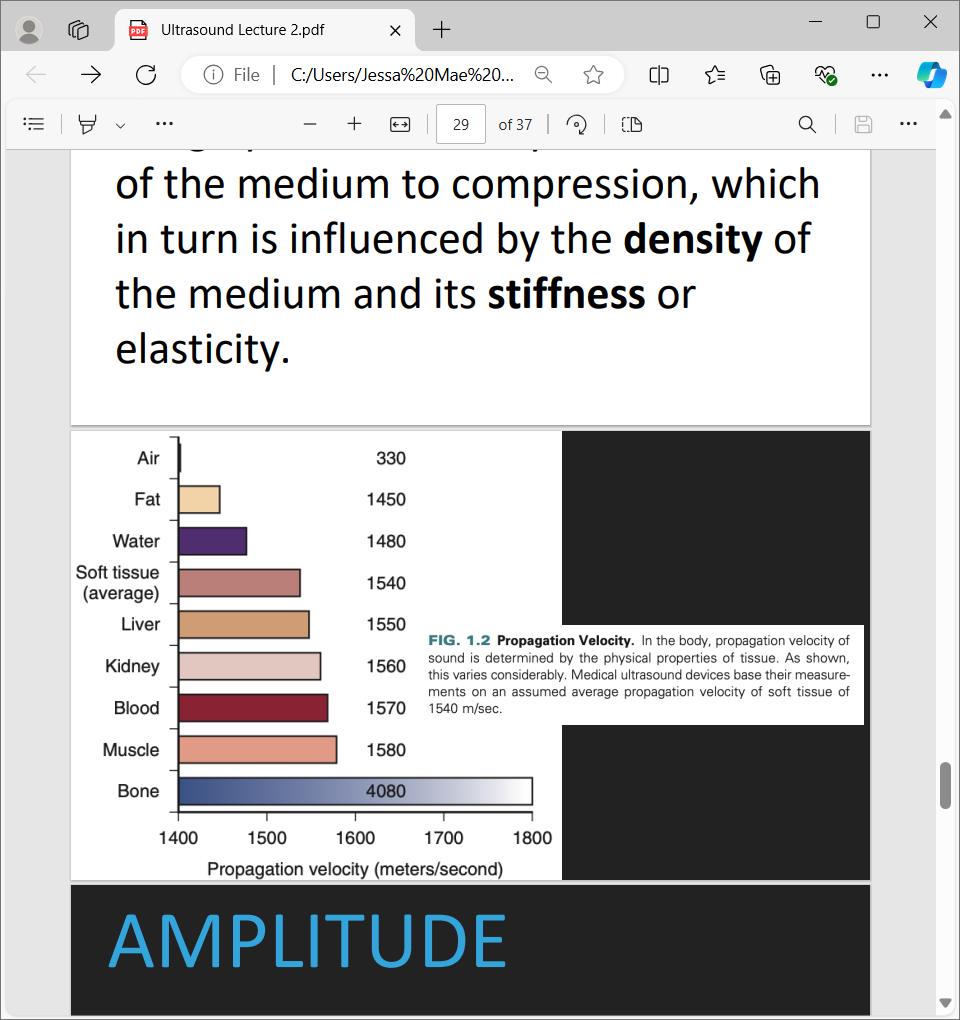
AMPLITUDE
The strength/intensity of a sound wave at a given time
Represented as hight of the wave
Decreases with increasing depth
Defines the brightness of the image
The higher the amplitude the brighter the image
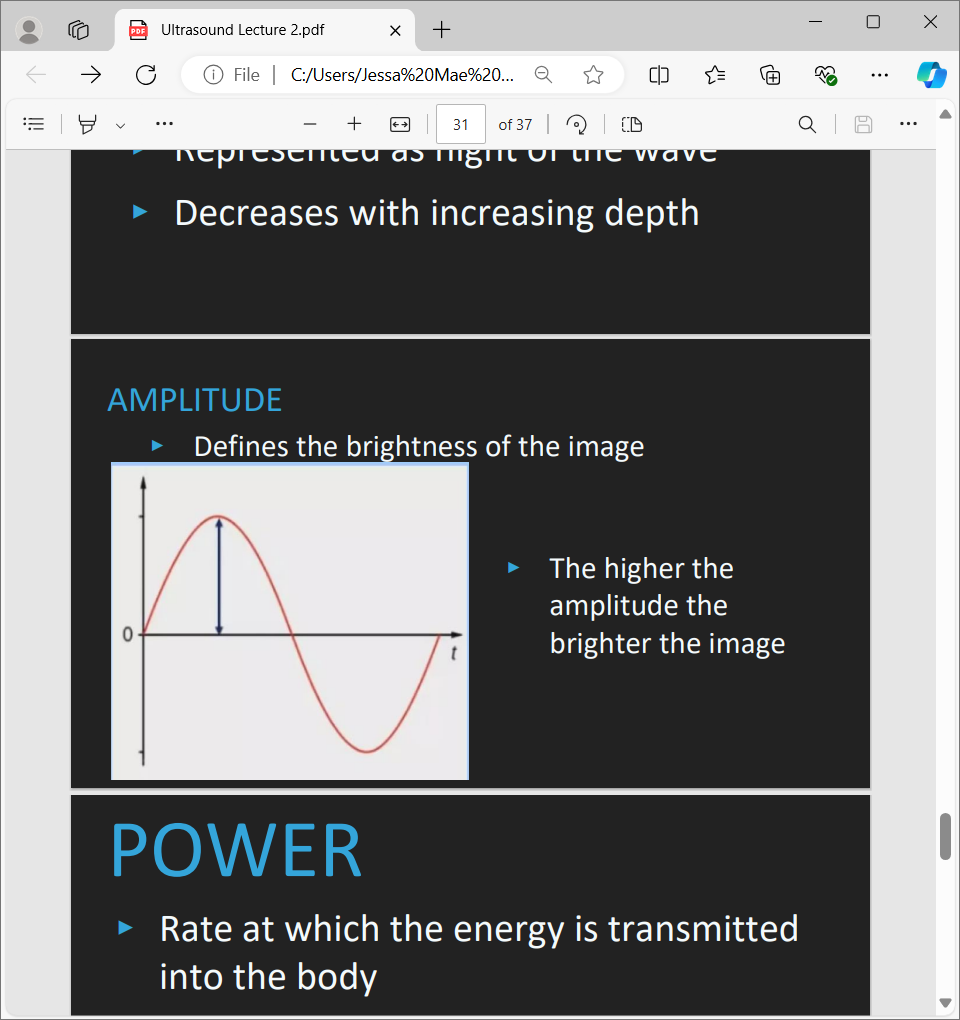
POWER
Rate at which the energy is transmitted into the body
It is not contant, the acoustic power varies over time and space
Unit: W, mW
INTENSITY
The amount of energy per second that passes through specified area
Intensity of sound measures in bel or decibel
Intensity of wave is proportional to the amplitude of the wave square
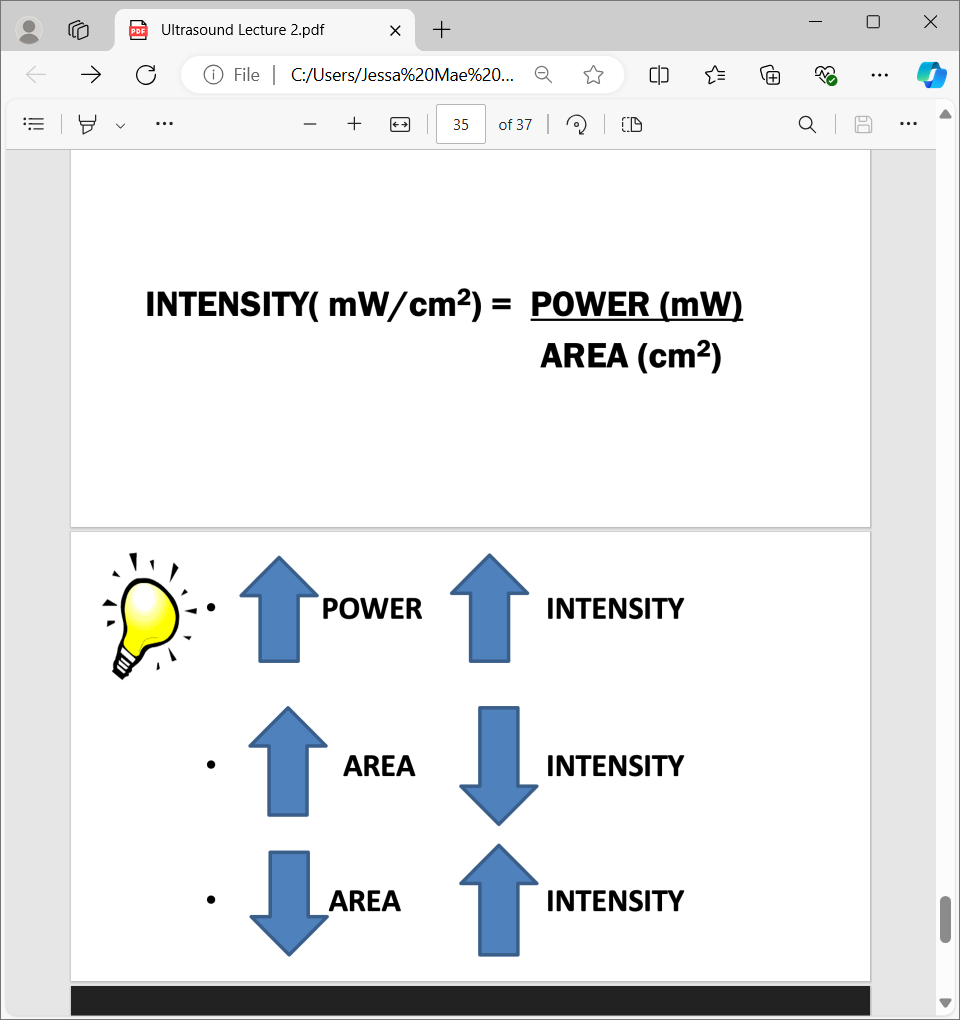
PRESSURE
Amount of force over a specific area ‣ Unit: Pascal, Megapascal
Proportional to the amount of force and volume of the sound wave
Inversely proportional to the area covered